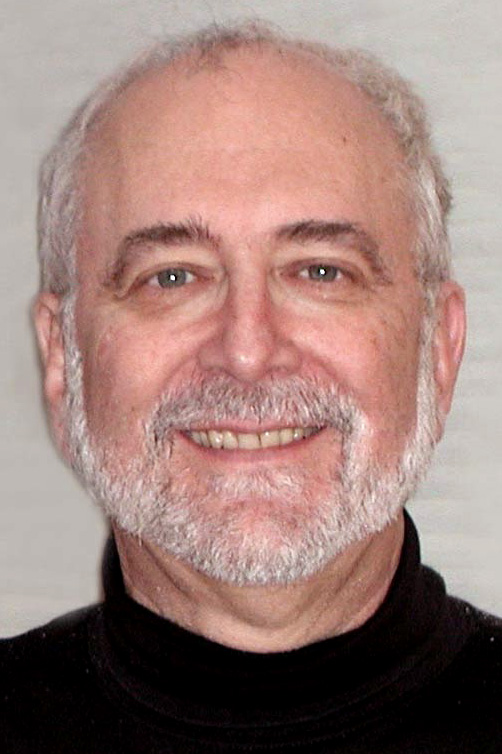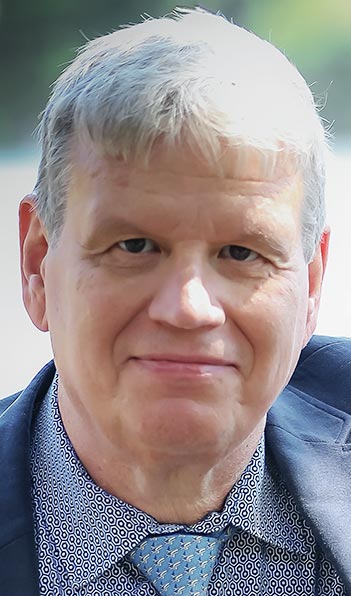

 The original Netmundial was a unique Internet governance event that took place in 2014 and set out to map new avenues for global cooperation around the theme, uniting diverse stakeholders to discuss the future of IG in a broad manner. It was initially convened by the Brazilian government and ICANN as an answer to the Snowden revelations of global Internet espionage performed by various nations (primarily the USA), in part due to these two actors being directly affected by the implications of the revelations. more
The original Netmundial was a unique Internet governance event that took place in 2014 and set out to map new avenues for global cooperation around the theme, uniting diverse stakeholders to discuss the future of IG in a broad manner. It was initially convened by the Brazilian government and ICANN as an answer to the Snowden revelations of global Internet espionage performed by various nations (primarily the USA), in part due to these two actors being directly affected by the implications of the revelations. more
 In this article, I present an overview of a series of 'proof-of-concept' studies looking at the application of domain-name entropy as a means of clustering together related domain registrations, and serving as an input into potential metrics to determine the likely level of threat which may be posed by a domain. more
In this article, I present an overview of a series of 'proof-of-concept' studies looking at the application of domain-name entropy as a means of clustering together related domain registrations, and serving as an input into potential metrics to determine the likely level of threat which may be posed by a domain. more
 The proposed new European Union (EU) Artificial Intelligence Act has been extolled in the media as a bold action by a major legislative body against the perceived dangers of emerging new computer technology. The action presently consists of an initial proposal for a Regulation with annexes from 2021, plus recent Amendments adopted on 14 June. This regulatory behemoth exists entwined among a multitude of other recent EU major regulations... more
The proposed new European Union (EU) Artificial Intelligence Act has been extolled in the media as a bold action by a major legislative body against the perceived dangers of emerging new computer technology. The action presently consists of an initial proposal for a Regulation with annexes from 2021, plus recent Amendments adopted on 14 June. This regulatory behemoth exists entwined among a multitude of other recent EU major regulations... more
 Did you know that we are swimming in Domain Name System abuse? As an Internet user, you probably were not aware. Apparently, doomsday is near, and the Internet is going to explode in our face if we do not do something about "domain name system abuse." This doomsday narrative has nearly jeopardized multistakeholder governance. However, it may also compel us to reconsider the multistakeholder model and its relevance in governing the Internet and its associated technologies. more
Did you know that we are swimming in Domain Name System abuse? As an Internet user, you probably were not aware. Apparently, doomsday is near, and the Internet is going to explode in our face if we do not do something about "domain name system abuse." This doomsday narrative has nearly jeopardized multistakeholder governance. However, it may also compel us to reconsider the multistakeholder model and its relevance in governing the Internet and its associated technologies. more
 ome 50 years ago, at the Palo Alto Research Centre of that renowned photocopier company Xerox, a revolutionary approach to local digital networks was born. On the 22nd of May 1973, Bob Metcalf authored a memo that described "X-Wire," a 3Mbps common bus office network system developed at Xerox's Palo Alto Research Center (PARC). more
ome 50 years ago, at the Palo Alto Research Centre of that renowned photocopier company Xerox, a revolutionary approach to local digital networks was born. On the 22nd of May 1973, Bob Metcalf authored a memo that described "X-Wire," a 3Mbps common bus office network system developed at Xerox's Palo Alto Research Center (PARC). more
 On Friday, 23rd June, Caribbean telecommunications operators (telcos) held a meeting in Miami to fine tune their strategy to force Big Tech companies to contribute financially to regional telecoms network infrastructure. Hosted by the Caribbean Telecommunications Union (CTU), and taking a similar perspective to the "fair share" proposal currently being debated in the European Union, regional network operators are arguing that over-the-top (OTT) service providers are responsible for 67 percent of the total Internet traffic in the Caribbean, but make no contributions or investments toward local delivery networks. more
On Friday, 23rd June, Caribbean telecommunications operators (telcos) held a meeting in Miami to fine tune their strategy to force Big Tech companies to contribute financially to regional telecoms network infrastructure. Hosted by the Caribbean Telecommunications Union (CTU), and taking a similar perspective to the "fair share" proposal currently being debated in the European Union, regional network operators are arguing that over-the-top (OTT) service providers are responsible for 67 percent of the total Internet traffic in the Caribbean, but make no contributions or investments toward local delivery networks. more
 Project Liberty's Institute sat down with Dave Clark, an early contributor to the TCP/IP protocols that built and run the Internet, and one of the expert advisors on DSNP, the Decentralized Social Networking Protocol. Dave Clark is Senior Research Scientist at MIT's Computer Science and Artificial Intelligence Laboratory (CSAIL) and Fellow of the National Academy of Engineering and the American Academy of Arts and Sciences. more
Project Liberty's Institute sat down with Dave Clark, an early contributor to the TCP/IP protocols that built and run the Internet, and one of the expert advisors on DSNP, the Decentralized Social Networking Protocol. Dave Clark is Senior Research Scientist at MIT's Computer Science and Artificial Intelligence Laboratory (CSAIL) and Fellow of the National Academy of Engineering and the American Academy of Arts and Sciences. more
 On the sunny beaches of Anguilla -- a small island of just 35 square miles -- I'm sure artificial intelligence (AI) is the last thing people are thinking about. The primary industries of Anguilla, set in the Leeward islands in the Caribbean, are tourism and offshore banking. However, this nation has been assigned the country code top-level domain (ccTLD) .AI -- which is being repurposed to represent artificial intelligence. more
On the sunny beaches of Anguilla -- a small island of just 35 square miles -- I'm sure artificial intelligence (AI) is the last thing people are thinking about. The primary industries of Anguilla, set in the Leeward islands in the Caribbean, are tourism and offshore banking. However, this nation has been assigned the country code top-level domain (ccTLD) .AI -- which is being repurposed to represent artificial intelligence. more
 In 2019, two organisations - Public.Resource.org of Sebastopol, California, and the Right to Know GLC of Dublin - brought suit against the European Commission for violating the fundamental rights of citizens to access the standards they are required by law to know, and attempting to protect intellectual property by copyright which lacked originality because it was, inter alia, provided by public governmental and industry sources. more
In 2019, two organisations - Public.Resource.org of Sebastopol, California, and the Right to Know GLC of Dublin - brought suit against the European Commission for violating the fundamental rights of citizens to access the standards they are required by law to know, and attempting to protect intellectual property by copyright which lacked originality because it was, inter alia, provided by public governmental and industry sources. more
 In a previous post, I asked whether electronically steered antennas (ESAs) would replace parabolic antennas in satellite ground stations. I read a few articles suggested by others and by Google search, used some common sense, produced a list of advantages of ESAs, and concluded that it was likely they would eventually replace parabolic antennas for many applications. more
In a previous post, I asked whether electronically steered antennas (ESAs) would replace parabolic antennas in satellite ground stations. I read a few articles suggested by others and by Google search, used some common sense, produced a list of advantages of ESAs, and concluded that it was likely they would eventually replace parabolic antennas for many applications. more
 Fiber manufacturers are always trying to make it easier to deploy fiber. One of the most interesting trends is the increasing migration from 250-micron fiber to 200-micron fiber. For those not familiar with the metric system, a micron is one-thousands of a millimeter. A 250-micron fiber has a diameter of 0.25 millimeters, while a 200-micron fiber has a diameter of 0.2 millimeters. more
Fiber manufacturers are always trying to make it easier to deploy fiber. One of the most interesting trends is the increasing migration from 250-micron fiber to 200-micron fiber. For those not familiar with the metric system, a micron is one-thousands of a millimeter. A 250-micron fiber has a diameter of 0.25 millimeters, while a 200-micron fiber has a diameter of 0.2 millimeters. more
 The digital domain encompasses the different spaces and spheres we use to relate and interact with the people and things that surround us using digital technologies. The Universal Declaration of Human Rights, UDHR, as the globally accepted standard, should serve us as the guiding light when it comes to striking the delicate balance between our rights and responsibilities on and offline. more
The digital domain encompasses the different spaces and spheres we use to relate and interact with the people and things that surround us using digital technologies. The Universal Declaration of Human Rights, UDHR, as the globally accepted standard, should serve us as the guiding light when it comes to striking the delicate balance between our rights and responsibilities on and offline. more
 A significant segment of the IoT ecosystem, the Internet of Medical Things (IoMT), is projected to grow at a compounded annual growth rate of 23.7 percent (forecast period: 2022 -- 2032). This fast growth is indicative of how rapidly IoTM is integrating into modern society, which has understandably attracted the attention of regulators. The widespread use of IoTM devices means that their malfunction or dysfunction can affect the health and lives of many. more
A significant segment of the IoT ecosystem, the Internet of Medical Things (IoMT), is projected to grow at a compounded annual growth rate of 23.7 percent (forecast period: 2022 -- 2032). This fast growth is indicative of how rapidly IoTM is integrating into modern society, which has understandably attracted the attention of regulators. The widespread use of IoTM devices means that their malfunction or dysfunction can affect the health and lives of many. more
 For a long time, arguments about the meaning of "DNS Abuse" prevented fruitful discussions within the ICANN community on when and how it is appropriate to act at the level of the DNS to address abuses online. The proposed amendments to RA and RAA agreements represent a significant and welcomed step in the right direction. As Secretariat of the Internet & Jurisdiction Policy Network (I&JPN), we strongly encourage their adoption... more
For a long time, arguments about the meaning of "DNS Abuse" prevented fruitful discussions within the ICANN community on when and how it is appropriate to act at the level of the DNS to address abuses online. The proposed amendments to RA and RAA agreements represent a significant and welcomed step in the right direction. As Secretariat of the Internet & Jurisdiction Policy Network (I&JPN), we strongly encourage their adoption... more
 OpenXDR is one of the most cost-effective SIEM alternatives that help businesses detect and mitigate threats within hectic modern architectures. A single cyber incident impacts every aspect of a business -- from system downtime, revenue losses, and reputation damage to disrupted operations. more
OpenXDR is one of the most cost-effective SIEM alternatives that help businesses detect and mitigate threats within hectic modern architectures. A single cyber incident impacts every aspect of a business -- from system downtime, revenue losses, and reputation damage to disrupted operations. more
Sponsored byVerisign

Sponsored byRadix

Sponsored byVerisign

Sponsored byCSC

Sponsored byWhoisXML API

Sponsored byDNIB.com

Sponsored byIPv4.Global
